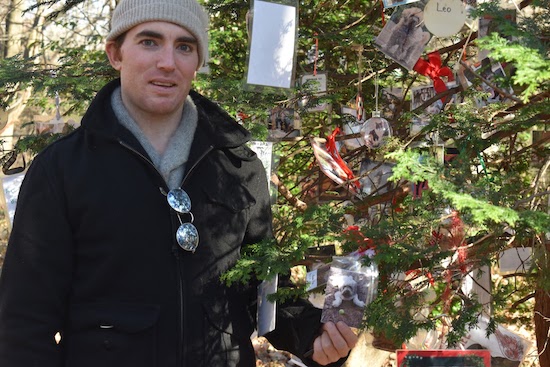
By Carol Tannenhauser
Why do you think the Winter Solstice, which occurs this year in the northern hemisphere on Tuesday, December 21, at 10:59 a.m. EST, has the least amount of daylight of any day of the year — nine hours and 15 minutes to be exact?
“There was a famous study in which Harvard undergraduates were asked what they thought was the reason for the Winter Solstice,” said Dr. Jackie Faherty, an astrophysicist at the American Museum of Natural History. “Seventy-five percent of them thought it had to do with the distance of the Earth from the Sun.”
You mean, it doesn’t?
“Absolutely not,” said Dr. Faherty. “We’re actually closer to the sun at the time. It’s the tilt,” she added, graciously leaving off the “stupid.”
“Don’t worry,” she said. “It’s not like everybody knows this. I have to explain it even to the brilliant, because the distance seems intuitive; it feels like the right answer.”
But if it were, she asks, why would South Americans be basking in long hours of warm, beautiful sunlight now, celebrating their Summer Solstice?
“The tilt of the Earth on its axis by 23-and-a-half degrees is everything,” Dr. Faherty explained. “It means that sometimes you’re leaning a little bit more directly into the sunlight, and sometimes you’re leaning a little bit less directly into it. And for us in the northern hemisphere, we have reached the point where we’re leaning the furthest that we’re going to get from the direct sunlight. So it’s the day that’s the shortest; that’s how it translates.”
Another mistake, Dr. Faherty said, is to dread the shortened day. “It should be celebrated,” she said, “because it’s a transition day. It marks the start of winter — but also the days are going to get longer and the sun will get higher in the sky.” As The Old Farmer’s Almanac put it, “It only gets brighter from here.”
“Figuring out that the earth had a tilt was the beginning of the opening of our knowledge about the universe,” Dr. Faherty concluded.
If you would like to learn more about the Winter Solstice, here’s a link to an AMNH video called Reason for the Seasons.
The discussion of the Winter Solstice starts around minute 11.








Earth is actually closer to the Sun now, but will be at the closest point in January 4th. It goes to reason that the Southern Hemisphere would have a slightly warmer summer than ours, since our summer is further from the sun. But, since there is a large difference in the land/water ratio between the two hemispheres, we actually have a slightly warmer winter since we have a greater landmass than the Southern Hemisphere, since land heats up faster and easier than water. But that also gives the Southern Hemisphere a milder winter…
Sorry, said that wrong. We have a warmer SUMMER.
Now it’s time for someone to explain why we had our earliest sunset of the year about a week or so back.
That would be good to understand.
https://www.sciphysics.com/2021/10/why-earliest-sunsets-of-year-come.html
I’m surprised that Dr. Faherty didn’t get into this aspect of the winter solstice but….
Today isn’t the shortest day of the year. It would be if the Earth didn’t have an atmosphere. However, the atmosphere refracts (bends) light which slightly alters when we “see” sunrise and sunset occurring (when the sun is setting, it actually set a few minutes ago and you are seeing a project of the sun cast by the atmosphere – same thing is true with sunrise but we “see” sunrise before it would occur without an atmosphere). This effect changes with latitude so the amount of daylight added depends upon where you are on Earth.
Anyways, because of this effect, there is roughly a week of time (clustered around December 21st) that are all equal in length. So, we’ve already had a few “shortest” days, and will have a few more before the length of day starts increasing.
The same is true in summer where June 21st is just one of about a week’s worth of “longest days” and the equinoxes aren’t actually equal in length. The day of the year that is actually 12 hours day and 12 hours night usually occurs near the equinoxes, but not right on them.
Oh, and one more thing:
Climatologists and astronomers mark the start/end of seasons differently. So, although December 21st is the astronomical start of winter, climatologists mark the start of winter on December 1st (the first day of the start of the 3 coldest months of the year). Spring will then start on March 1st. When you think about how temperature and weather behave, the astronomical definitions of the seasons don’t make quite as much sense as the climatological ones.
Can we go back to the complaining now?
Cato,
LOL
Thanks for your link to the Old Farmers Almanac. I buy one every year — wouldn’t be without it!